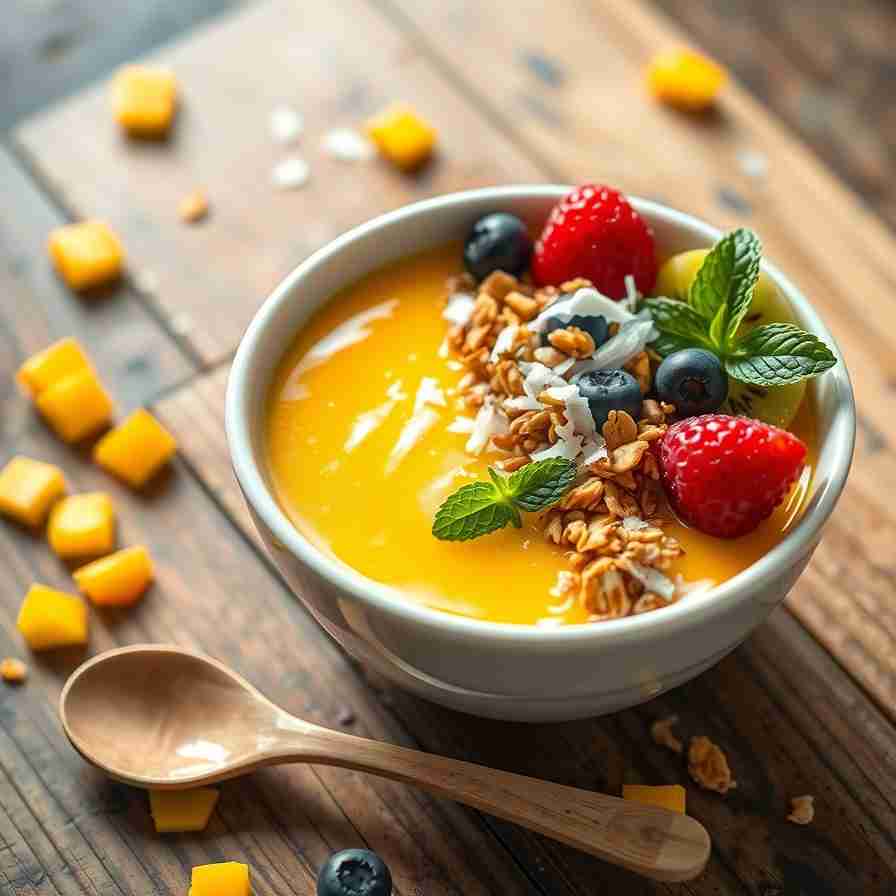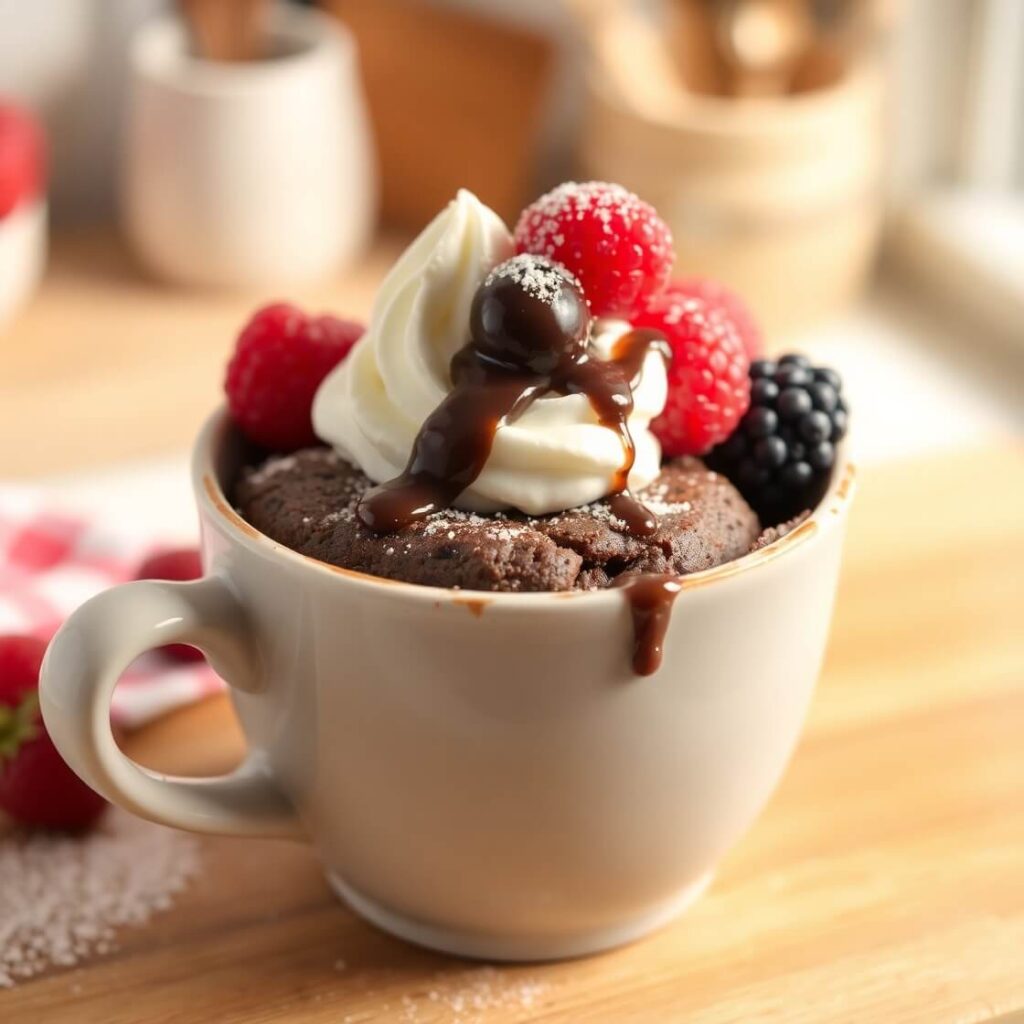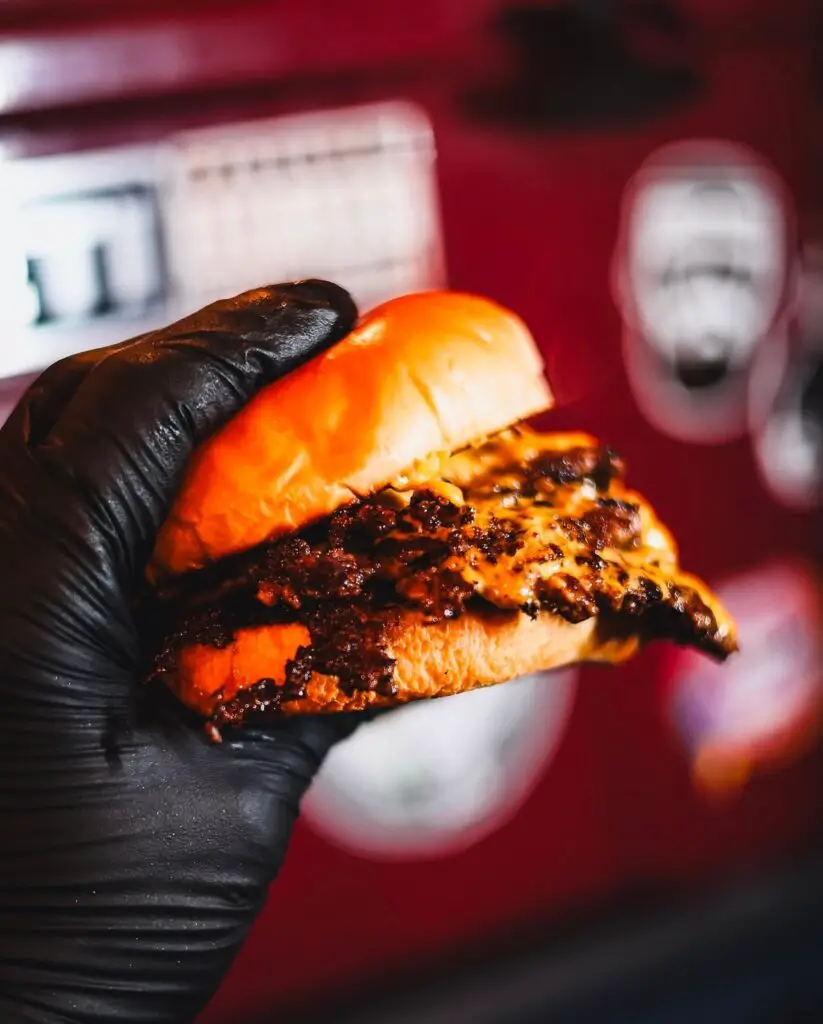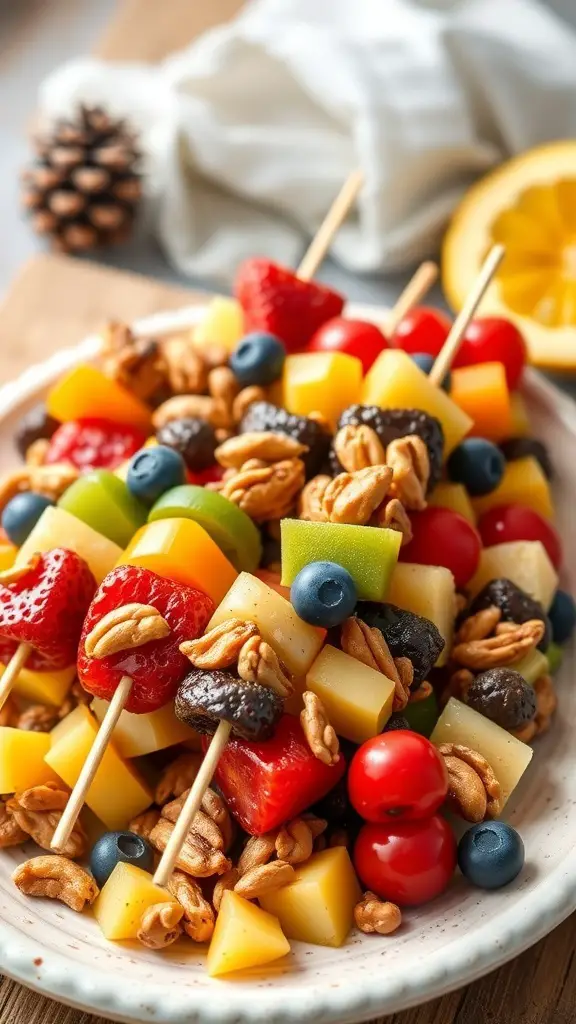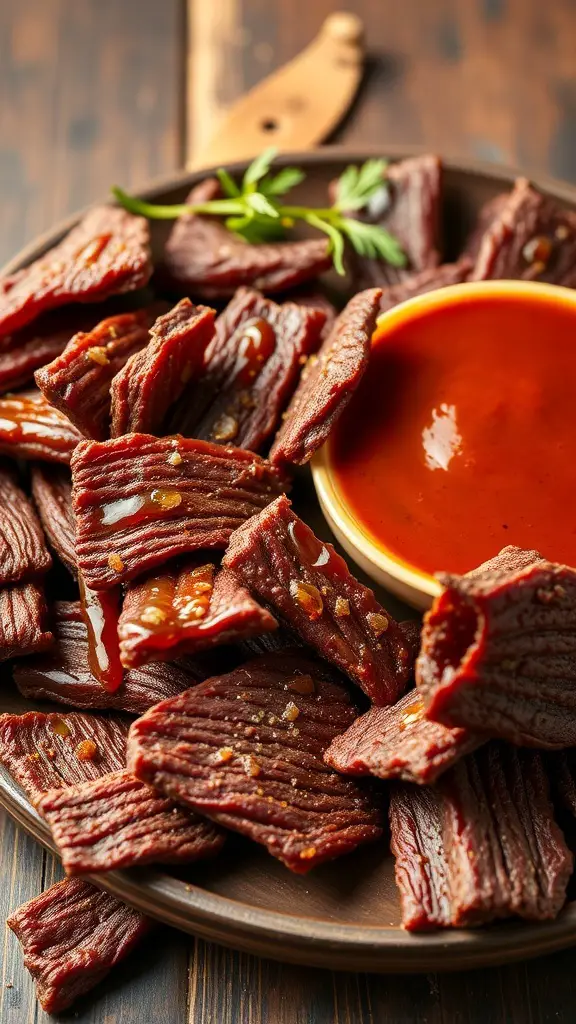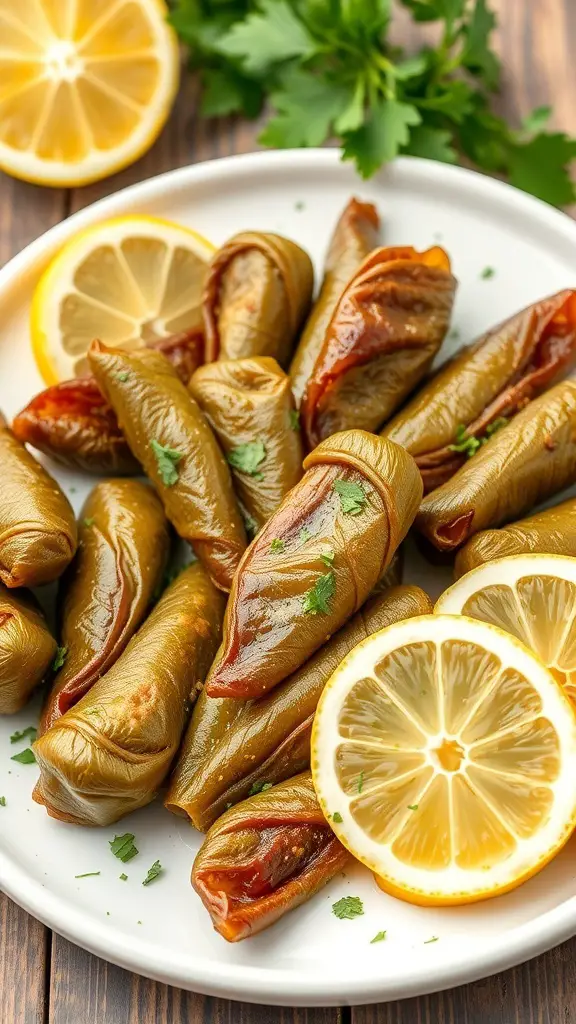Mango Smoothie Bowl Recipe
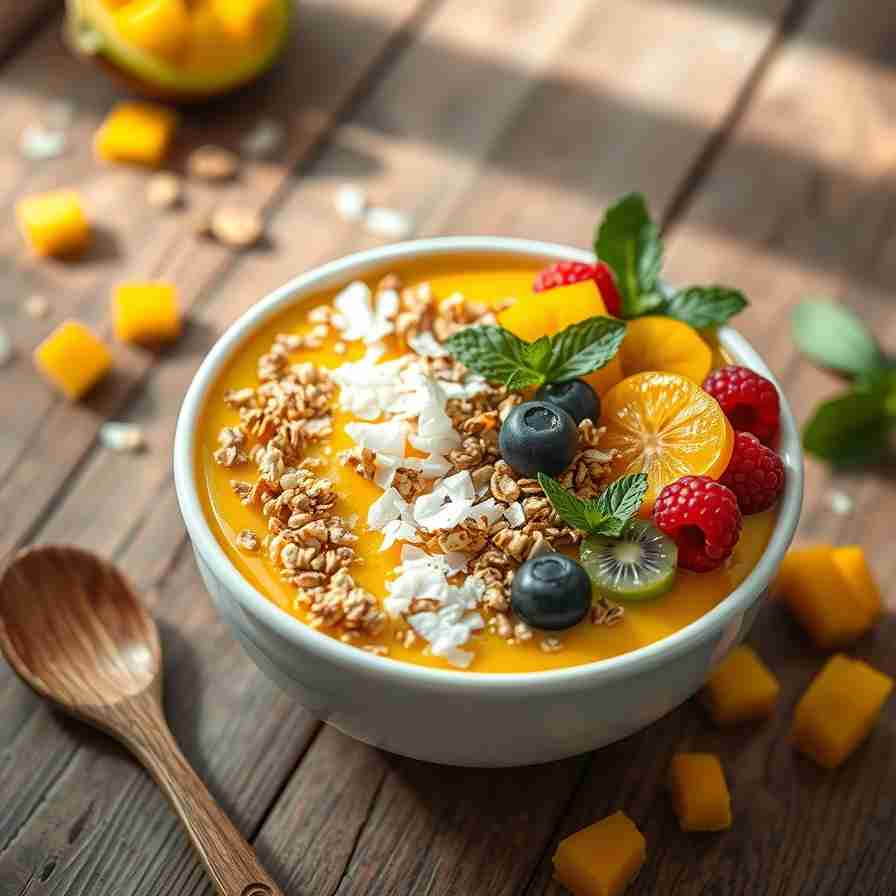
It started on a hot summer morning in my grandmother’s kitchen. The ceiling fan spun lazily, the air thick with the smell of ripe mangoes. We had a basket full of them—Alphonsos, their skins glowing like little suns—and I remember Grandma saying, “If you can’t eat them all, drink them.”
That day, I blended my first mango smoothie. It was simple, clumsy, and a little too thick because I didn’t know when to stop adding ice. But the taste? Bright, tropical, and sunshine-sweet. Since then, every summer, I’ve made some version of that smoothie—sometimes with yogurt, sometimes with oats—but this mango smoothie bowl became my favorite.
It’s like a vacation in a bowl. The creamy base, the golden color, and the crunch of toppings make it feel indulgent yet wholesome. Whether you’re trying to start your day with something vibrant or want a cooling snack after a long day, this smoothie bowl never disappoints.
And yes—my family now expects it every weekend when mangoes are in season. My husband calls it “sunshine pudding,” and my kids fight over who gets the last slice of kiwi on top. That’s how you know a recipe has found its home.
Quick Kitchen Snapshot
Prep time: 10 minutes
Blend time: 2–3 minutes
Total time: 12–15 minutes
Serves: 2 smoothie bowls
Best for: Breakfast, brunch, or a post-workout treat
Difficulty: Easy (just a blender and a little layering fun)
This recipe is perfect for busy mornings. You can chop and freeze your fruit ahead of time so all you have to do is blend, pour, and decorate. No cooking, no mess—just a few minutes between you and a bowl full of tropical happiness.
Ingredients That Make It Shine
When it comes to smoothie bowls, ingredients aren’t just about flavor—they’re about texture and balance. The mango gives it sweetness and creaminess, while banana adds body and a naturally thick consistency. Here’s what I use, and why.
Ripe mangoes: Go for the juiciest, sweetest ones you can find. I love using Ataulfo or Alphonso for their rich color and buttery texture. If fresh mangoes aren’t in season, frozen chunks work beautifully (and make the smoothie extra cold).
Frozen banana: This is the secret to a thick, spoonable texture. Peel and freeze ripe bananas overnight for that creamy, soft-serve feel.
Greek yogurt (or plant-based alternative): Adds creaminess and protein. Coconut yogurt gives a lovely tropical note if you’re keeping it vegan.
Milk or juice: A small splash of coconut milk makes the flavor round and silky, but almond milk or orange juice also works for a lighter base.
Honey or agave (optional): If your mangoes aren’t super sweet, a drizzle of honey or agave will brighten the taste.
Toppings (where the fun begins):
- Fresh fruit (kiwi, berries, or sliced banana)
- Granola for crunch
- Shredded coconut or chia seeds
- A few mint leaves for color
The best part about this recipe is how forgiving it is. You can swap, add, or skip ingredients depending on what’s in your kitchen or your mood that morning.
Why This Recipe Just Works
I’ve tried dozens of smoothie bowls over the years, but this one always feels right. It strikes that perfect balance—naturally sweet but not cloying, refreshing yet satisfying. The trick is in how the ingredients come together:
The frozen banana gives it that thick, ice cream-like texture without needing any added ice, which can water down the flavor. The mangoes carry the tropical sweetness, while Greek yogurt adds that velvety creaminess and a subtle tang that keeps it from being too sugary.
I once made it without yogurt, thinking it wouldn’t matter much—but it did. The bowl turned out thin and lacked that luscious mouthfeel. That’s when I realized the yogurt wasn’t just for flavor; it gave the bowl body and staying power.
Another key detail: blending speed. Start slow to crush the frozen fruit, then turn it high to whip air into the mix. It should swirl like soft serve when you’re done. And if you’ve ever had your blender stall mid-spin (I’ve been there), just stop, scrape down the sides, and add a tablespoon of liquid at a time until it catches again.
The result? A silky, tropical base that feels like breakfast and dessert in one spoonful.
Step-by-Step: My Favorite Way to Make It
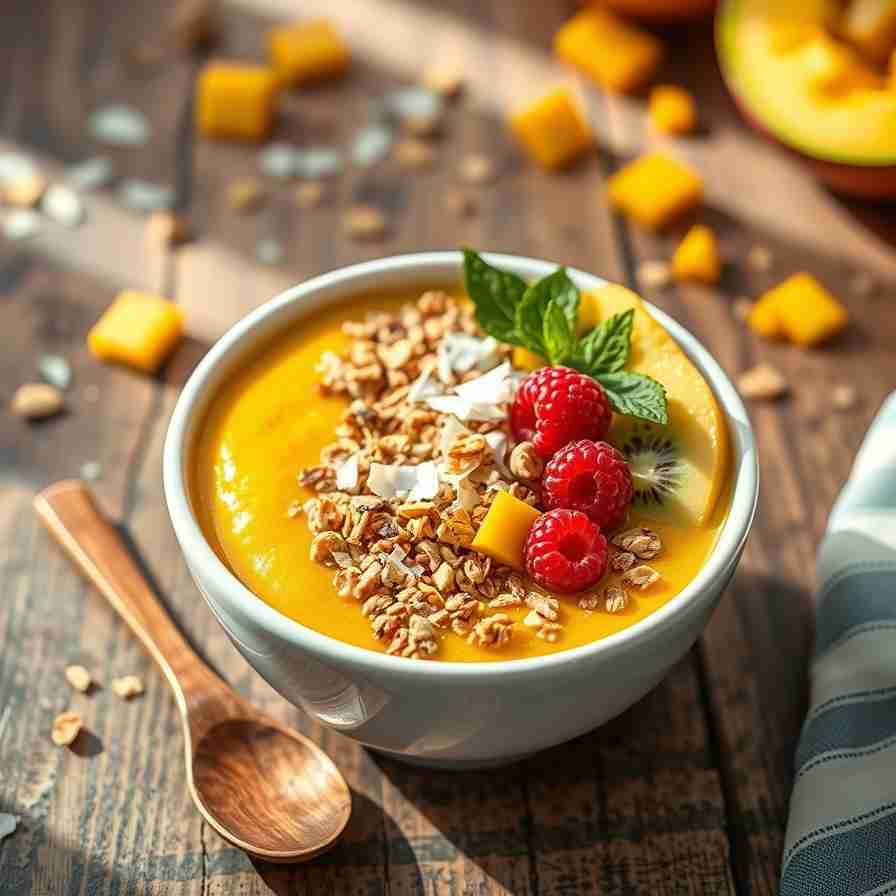
Step 1 – Prep your ingredients.
If you’re using fresh mango, peel, slice, and freeze it for a few hours before blending. It makes a big difference in texture. The banana should already be frozen—trust me, it’s worth planning ahead for that creamy consistency.
Step 2 – Add to the blender.
Start with the frozen fruit at the bottom, then add the yogurt and a splash of milk or juice. This layering helps the blender work more efficiently and prevents air pockets.
Step 3 – Blend it smooth.
Begin on a low setting, then gradually increase speed. You’ll hear the sound shift as it thickens. Stop occasionally to scrape down the sides. The consistency should be thicker than a regular smoothie—closer to soft-serve ice cream.
Step 4 – Taste and tweak.
Dip a spoon in and test. If it’s too tart, add honey. Too thick? Add a splash more milk. I usually end up tweaking just a little based on how ripe my mangoes are.
Step 5 – Pour and decorate.
Spoon the smoothie into a chilled bowl (it helps it stay thick longer). Now comes the creative part: layer on your toppings. I love granola down one side, kiwi slices fanned across the middle, and a sprinkle of coconut for that beachy vibe.
Step 6 – Enjoy immediately.
The magic is in that first cold, creamy bite—the tang of yogurt, the sweetness of mango, the crunch of granola. If you pause for a second, you can almost taste the sunshine.
Storing and Making Ahead
If you’re like me and love quick breakfasts, you can prep most of this ahead.
For the base:
- Blend your smoothie mixture and pour it into airtight containers or jars.
- Freeze up to 2 days in advance. When ready to eat, let it thaw slightly and re-blend with a splash of liquid.
For toppings:
- Keep your granola and seeds ready in small jars.
- Slice your fruit fresh, just before serving, so it stays vibrant and doesn’t bleed color into the bowl.
Bonus tip: If you’re hosting brunch or meal-prepping for a busy week, blend the base in bulk, freeze in silicone molds, and pop out portions to blend whenever you crave a bowl.
I once made a big batch before a road trip and took the frozen cubes in a cooler. By the time we stopped at a rest area, I re-blended them with a little coconut milk in a travel blender—and it tasted like we were eating breakfast in Bali.
Pro Notes & Lessons Learned
Over the years, I’ve made this mango smoothie bowl more times than I can count—and along the way, I’ve picked up a few lessons worth sharing.
The first time I made it for guests, I overfilled the blender. I thought, “It’ll all fit!” But halfway through blending, mango puree splattered across my kitchen wall in a bright yellow arc. Lesson learned: never fill your blender more than two-thirds full. It’s a small thing, but it keeps your morning from turning into a cleanup session.
Another trick I swear by? Freeze your serving bowls for ten minutes before pouring in the smoothie. It sounds fancy, but it makes a big difference. The cold surface keeps your bowl thick and creamy longer—no more melting into soup halfway through.
And if you want that photo-ready swirl (the one that makes it look like café-style perfection), tap the bowl gently on the counter before adding toppings. It evens out the surface and makes decorating a joy.
I also learned to keep the toppings simple. I used to pile on everything I could find—nuts, seeds, coconut, chocolate chips—but then realized that too much crunch hides the smooth, tropical essence of mango. Now, I let the fruit shine.
Serving & Presentation Ideas
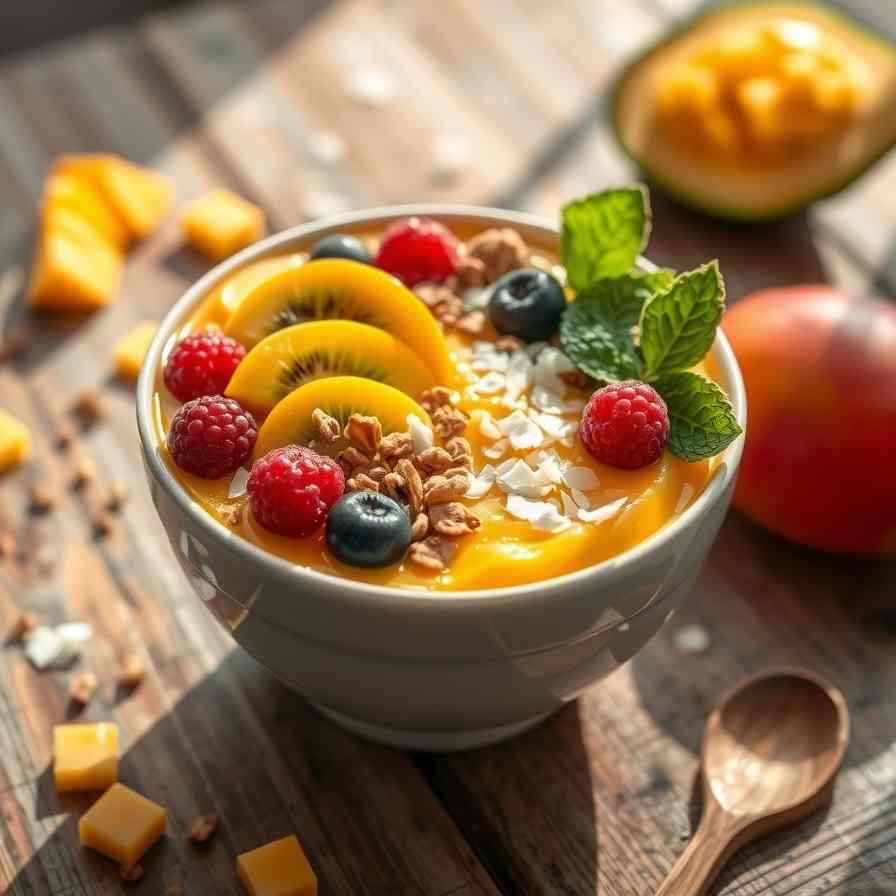
I always say that a smoothie bowl should be a feast for the eyes as much as the palate. The beauty of this mango smoothie bowl lies in its simplicity—golden hues against bright greens, whites, and purples.
Here are a few presentation ideas that never fail to impress:
Tropical contrast: Add kiwi slices, shredded coconut, and passionfruit seeds. The color pop is irresistible.
Berry bliss: Pair with blueberries, strawberries, and a drizzle of honey for a tangy balance.
Nutty crunch: A handful of crushed almonds or pistachios adds a luxurious, roasted note.
Kids’ favorite: Use mini cookie cutters to shape fruits—my kids love star-shaped melon pieces floating on top.
If you’re serving for brunch, set up a “smoothie bowl bar.” Arrange small bowls of toppings—granola, fruit, seeds—and let everyone build their own. It’s interactive, fun, and surprisingly elegant.
Sometimes, I even serve these in small glass jars for a grab-and-go breakfast. They look charming in the fridge, like sunshine waiting behind glass.
Common Mistakes to Avoid
I’ve seen a few smoothie bowl blunders—some mine, some from well-meaning friends—and they’re easy to avoid once you know what to watch for.
1. Adding too much liquid:
This is the number-one mistake. A smoothie bowl should be thick and spoonable, not sippable. Start with minimal liquid (2–3 tablespoons) and add only if needed.
2. Not freezing the fruit enough:
Fresh mangoes blend beautifully, but without frozen fruit, your bowl will melt fast. Always keep banana slices or mango chunks in your freezer stash.
3. Over-blending:
There’s a sweet spot between smooth and over-processed. If you blend too long, friction heat can melt your base. Once it looks creamy and consistent—stop.
4. Ignoring balance:
Mangoes are sweet, but without some tang (from yogurt or lime juice), the flavor can fall flat. A little acidity wakes everything up.
5. Forgetting to taste:
Every mango is different. Some are sweet like honey; others are more tart. Taste your mixture before pouring—it’s the simplest way to make every bowl perfect.
Substitutions & Adaptations
The beauty of a smoothie bowl is flexibility—you can make it fit any diet or preference.
Vegan:
Swap Greek yogurt with coconut yogurt and use agave or maple syrup instead of honey. Coconut milk or oat milk keeps the tropical note intact.
Gluten-free:
Most granolas are naturally gluten-free, but double-check labels or make your own with oats, nuts, and a little honey.
Protein boost:
Add a scoop of vanilla or unflavored protein powder before blending. It turns your breakfast into a post-workout meal without changing the taste.
Low-sugar option:
Skip added sweeteners entirely and rely on ripe mangoes and bananas for natural sweetness. You can also add a squeeze of lime for balance.
Kids’ version:
Make it more fun—add a swirl of yogurt on top before decorating, or let them choose toppings from small bowls. When my daughter gets to “paint” her smoothie with fruit, she finishes it every time.
FAQs
Can I make this smoothie bowl the night before?
Yes, but it’s best enjoyed fresh. If you want to prep ahead, blend the base, store it in a jar, and freeze. Thaw slightly and re-blend in the morning for that just-made texture.
Do I need a high-speed blender?
A good blender helps, but any decent model works if your fruit is slightly thawed. Just blend in small batches if needed.
What if I don’t have mangoes?
Use frozen peaches or pineapple instead. The flavor will change, but it’ll still have that tropical sweetness.
Can I add greens or veggies?
Absolutely. A handful of spinach blends in seamlessly and doesn’t affect the flavor much. For a more refreshing version, add a slice of cucumber.
Is it okay to skip banana?
Yes, but it changes the consistency. Replace it with frozen avocado for creaminess or add extra mango with a splash more yogurt.
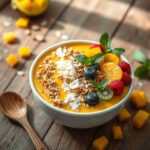
Mango Smoothie Bowl Recipe
- Total Time: 12–15 minutes
- Yield: 2 1x
- Diet: Vegetarian
Description
This mango smoothie bowl blends ripe mangoes, frozen banana, and creamy yogurt into a luscious, spoonable base topped with granola, fruit, and coconut. Perfect for bright mornings, summer brunches, or anytime you need a refreshing, wholesome treat.
Ingredients
- 2 ripe mangoes (or 1½ cups frozen mango chunks)
- 1 frozen banana
- ½ cup Greek yogurt (or coconut yogurt for vegan)
- ¼ cup coconut milk (or almond milk)
- 1 tablespoon honey or agave (optional)
2. Toppings (optional):
- Granola
- Sliced kiwi or banana
- Berries
- Shredded coconut
- Chia seeds
- Fresh mint leaves
Instructions
- Add frozen mango, banana, yogurt, and milk to a blender.
- Blend on low, then gradually increase speed until smooth and thick.
- Taste and adjust sweetness or thickness as desired.
- Pour into chilled bowls.
- Decorate with your favorite toppings and enjoy immediately.
Notes
- For extra creaminess, freeze your mango and banana overnight.
- Don’t add too much liquid—aim for a thick, soft-serve texture.
- Make it vegan by swapping dairy for plant-based alternatives.
- Prep Time: 10 minutes
- Cook Time: 2–3 minutes
- Category: Breakfast / Snack
- Method: Blended
- Cuisine: Tropical / Modern
Nutrition
- Serving Size: 2
- Calories: 280
- Sugar: 38g
- Sodium: 45mg
- Fat: 4g
- Saturated Fat: 2g
- Unsaturated Fat: 1.5g
- Trans Fat: 0g
- Carbohydrates: 56g
- Fiber: 6g
- Protein: 8g
- Cholesterol: 5mg

